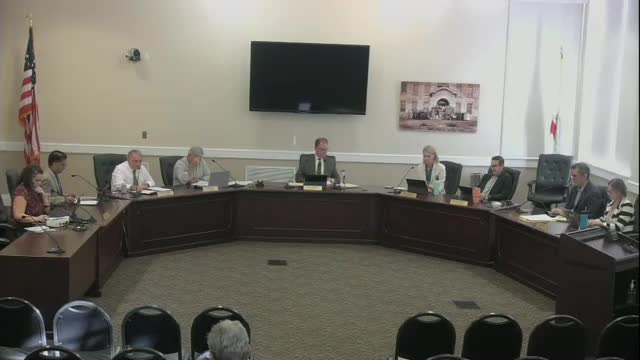New code aims to electrify homes and cut emissions
August 28, 2024 | Saint Helena, Napa County, California
This article was created by AI summarizing key points discussed. AI makes mistakes, so for full details and context, please refer to the video of the full meeting. Please report any errors so we can fix them. Report an error »

In a recent government meeting, officials discussed a proposed amendment to the local building code aimed at enhancing energy efficiency and promoting electrification in new residential constructions. The initiative, spearheaded by Napa County's climate action and sustainability committee, seeks to align local regulations with county-wide standards, encouraging builders to adopt more environmentally friendly practices.
Building official Phil Henry presented the draft ordinance, clarifying that it does not outright ban gas appliances but rather incentivizes the construction of all-electric homes. The proposed code would require single-family homes to achieve a 13% higher energy efficiency standard than current regulations, while multifamily units would need to meet a 10% increase. Builders would have the option to comply through performance measures, such as improved insulation or the installation of solar panels and energy storage systems.
The council raised concerns about the potential impact on affordable housing, with some members questioning whether the new requirements could create financial barriers for developers. Henry assured that the ordinance includes exemptions for accessory dwelling units (ADUs) and farmworker housing, which are often more affordable. He emphasized that while initial construction costs might rise, the long-term savings on energy bills could benefit tenants.
Public comments highlighted the need for further data to support claims of cost-effectiveness, with some speakers urging the council to delay approval until more comprehensive analyses are available. The council acknowledged the importance of ensuring that the ordinance is enforceable and beneficial for the community, particularly in light of California's broader goals for reducing greenhouse gas emissions.
The council ultimately decided to continue discussions and gather additional information before moving forward with the ordinance, emphasizing the need for a balanced approach that addresses both environmental goals and housing affordability.
Building official Phil Henry presented the draft ordinance, clarifying that it does not outright ban gas appliances but rather incentivizes the construction of all-electric homes. The proposed code would require single-family homes to achieve a 13% higher energy efficiency standard than current regulations, while multifamily units would need to meet a 10% increase. Builders would have the option to comply through performance measures, such as improved insulation or the installation of solar panels and energy storage systems.
The council raised concerns about the potential impact on affordable housing, with some members questioning whether the new requirements could create financial barriers for developers. Henry assured that the ordinance includes exemptions for accessory dwelling units (ADUs) and farmworker housing, which are often more affordable. He emphasized that while initial construction costs might rise, the long-term savings on energy bills could benefit tenants.
Public comments highlighted the need for further data to support claims of cost-effectiveness, with some speakers urging the council to delay approval until more comprehensive analyses are available. The council acknowledged the importance of ensuring that the ordinance is enforceable and beneficial for the community, particularly in light of California's broader goals for reducing greenhouse gas emissions.
The council ultimately decided to continue discussions and gather additional information before moving forward with the ordinance, emphasizing the need for a balanced approach that addresses both environmental goals and housing affordability.
View full meeting
This article is based on a recent meeting—watch the full video and explore the complete transcript for deeper insights into the discussion.
View full meeting
